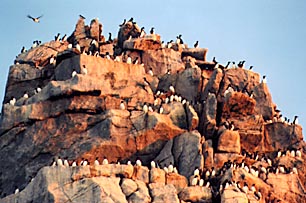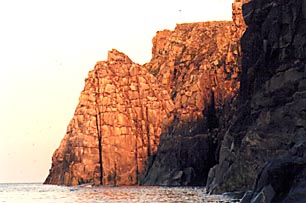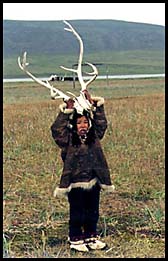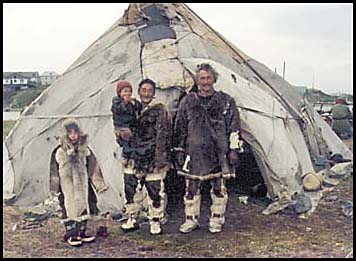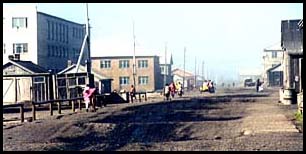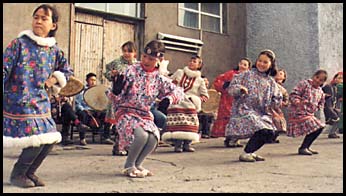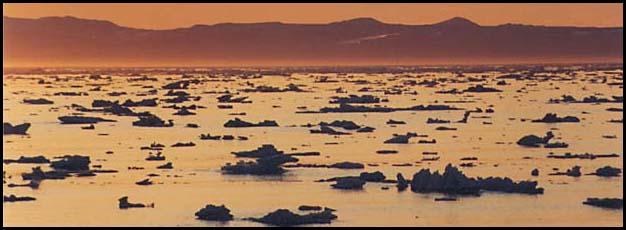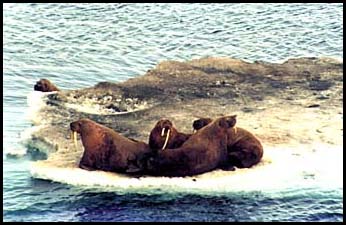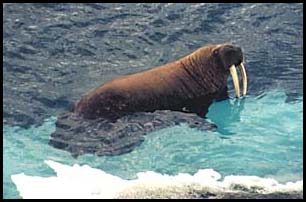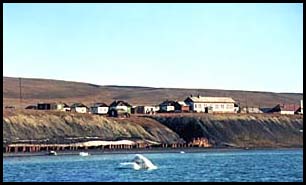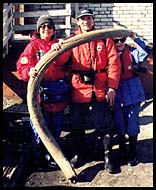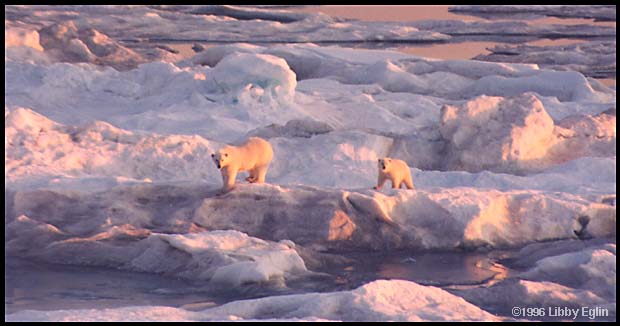| "THE ICE WAS HERE, THE ICE WAS THERE, THE ICE WAS ALL AROUND. IT CRACKED AND GROWLED AND ROARED AND HOWLED LIKE NOISES IN A SWOUND." --- Samuel Taylor Coleridge (from the Ancient Mariner) |
||||||||||||||
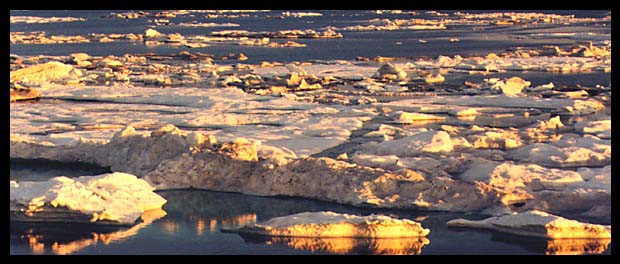 For most of the year Wrangel Island lay silent, surrounded by an impenetrable ice field. We would not know whether our attempt to reach Wrangel would be successful.
It's hard to imagine a place in this day and age where the modern traveller has not yet visited. But that was precisely where we were headed that August evening as we left Provideniya, Russia, to begin our epic adventure aboard the R/V Akademik Shokalskiy en route to the Russian Arctic. Our destination was Wrangel Island and our voyage would take us north up through the Bering Strait and into the Chukchi Sea. The conditions in the far north of Russia are very severe with the average temperature rising above freezing for only a few months during their brief summer. This bleak and frozen wasteland comes alive during the months of July and August, fueled by the short but powerful midnight sun. It was during this brief window of opportunity that we hoped to make a run for Wrangel. Wrangel Island lies in the Chukchi Sea at the extreme north-eastern corner of Russia 87 miles off the Siberian mainland. Wrangel, along with Herald Island are the only two significant land masses in the vast marine region north of Siberia. These two islands constitute one of Russia's most treasured refuge for wildlife. Since 1976, the area has been designated an International Biosphere Reserve, and special measures have been taken to preserve the integrity of the unique community of arctic wildlife that lives there. The Shokalskiy proceeded north along the coast of the Chukotskiy Peninsula where frequent zodiac landings were made. Anchoring beside Nuneangan Island our zodiacs drove towards the cliffs of the island where every crevasse of the 120 metre high ledges were filled with various species of nesting and roosting birds! By keeping a safe distance we were able to observe the hilarious antics of the Murres and Puffins as these awkward flyers tried to lift off.
Our First Zodiac Landing The small community of Yanrakynnot, pop. 420, provided us with our first zodiac landing. Once on shore, we were invited into a real Yaranga (skin tent) for dried fish and fresh walrus heart and delighted in watching the antics of the beautiful children dressed in traditional and western clothing.
Yanrakynnot was originally an ancient coastal village built of sod houses and skin tents. The present inhabitants of this remote village still practice their old way of life living in skin tents and using their Umiaks (skin boats) during the summer months when they spend many days on the open tundra and at sea hunting and fishing for Walrus and Grey Whales.
A short walk to their museum displaying native ivory carving, artwork and tradition clothing showcased the incredible skills of these native peoples. Sadly, it was difficult to say goodbye to the smiling dancers and beautiful children of Uelen. At approximately 0830 hrs we sailed over the Arctic Circle. That evening we encountered a raging storm which lasted most of the night!! The 2-4 metre swells kept all but 12 of us confined to our bunks most of the night. At our breakfast briefing the next morning, Captain Kolesnikov informed us that reports on ice conditions appeared to be favorable and that he had decided to head right for Wrangel. And thus with calm and ice free seas plus favorable winds we hoped to reach Wrangel Island by 2000 hrs. In the early evening of August 15th the outline of Wrangel Island loomed over the horizon. Only the highest peaks of the 80 mile island were visible and gave the impression of several islands.
And so we set foot on Wrangel. We were met by a few scientists from the island who could hardly believe their eyes as we waded on shore and made our way up onto the island. They were excited to take us on a tour of the community and talked about the denning Polar Bears (approx. 350 to 500 pregnant bears denning on the islands), the nesting Snow Geese (the last remaining nesting area is on Wrangel) , the introduction of Musk Ox as well as the history of the island. Two of the scientists had been on Wrangel for 15 years and fielded our many questions with great enthusiasm. The Woolly Mammoth The highlight of my visit to Wrangel was an encounter with the tusks of the prehistoric Woolly Mammoth!!! The Woolly Mammoth died out on the continental land masses as part of the Late Pleistocene mass extinction of large mammals. However, new finds have come from Wrangel indicating the presence of mammoths between 7,000 and 4,000 years ago. That extends the species survival by some 6,000 years beyound its previously supposed global extinction!!!!! As the scientists let us examine the jaws and curved tusks of the mammoth, I glanced over the endless tundra and dared to imagine what it would be like to see the Woolly Mammoth lumbering on the landscape once again!!!!!
Our visit to Wrangel Island was short. Our Captain ever aware of the heavy ice pack reminded us that it was almost time to leave. We said our goodbyes to the scientists and the children who had come down to the shore to see us off. It would be many months before the ice would once again release its grip on the land and they were very grateful for our visit.
|
||||||||||||||

